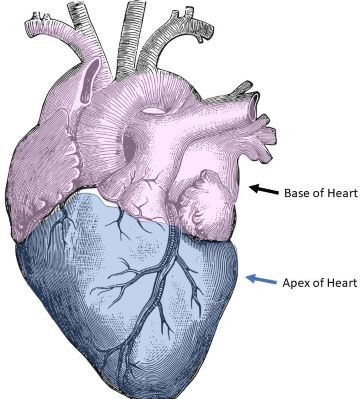A nurse is caring for a child who has influenza. The nurse should identify which of the following statements by the parent indicates the child has an increased risk for Reye syndrome.
"I give my child ibuprofen when his muscles are aching."
"I am encouraging my child to drink grapefruit juice."
"I am leaving a humidifier on in my child's room when he naps."
"I give my child aspirin to reduce his fever."
The Correct Answer is D
Choice A: Ibuprofen is a nonsteroidal anti-inflammatory drug (NSAID) that can be used to relieve pain and inflammation in children with influenza. Ibuprofen does not increase the risk of Reye syndrome, which is a rare but serious condition that affects the brain and liver.
Choice B: Grapefruit juice is a citrus fruit that can provide vitamin C and hydration for children with influenza. Grapefruit juice does not increase the risk of Reye syndrome, but it can interact with some medications and affect their absorption or metabolism.
Choice C: A humidifier is a device that adds moisture to the air and can help ease congestion and coughing in children with influenza. A humidifier does not increase the risk of Reye syndrome, but it should be cleaned regularly to prevent bacterial growth and infection.
Choice D: Aspirin is a salicylate that can be used to reduce fever and inflammation in children with influenza. However, aspirin can increase the risk of Reye syndrome, especially in children who have viral infections. Reye syndrome can cause swelling in the brain, liver damage, and even death. Therefore, aspirin should be avoided in children under 19 years old who have influenza or other viral illnesses.
Nursing Test Bank
Naxlex Comprehensive Predictor Exams
Related Questions
Correct Answer is A
Explanation
Choice A: A WBC count of 17,000/mm³ is an abnormal result that the nurse should anticipate when reviewing this client's laboratory values, as it indicates leukocytosis, which is an increase in white blood cells. Leukocytosis can occur in a child who has cystic fibrosis (CF), which is a condition that causes thick mucus to block the airways and lungs and causes respiratory infections and inflammation. A normal WBC count for children is 5,000 to 10,000/mm³.
Choice B: A neutrophil count of 3,000/mm³ is not an abnormal result that the nurse should anticipate when reviewing this client's laboratory values, as it indicates normal neutrophil levels. Neutrophils are a type of white blood cell that fight bacterial infections. A normal neutrophil count for children is 1,500 to 8,000/mm³.
Choice C: A lymphocyte count of 3,000/mm³ is not an abnormal result that the nurse should anticipate when reviewing this client's laboratory values, as it indicates normal lymphocyte levels. Lymphocytes are a type of white blood cell that fight viral infections. A normal lymphocyte count for children is 1,500 to 4,000/mm³.
Choice D: An RBC count of 4.2 million/mm³ is not an abnormal result that the nurse should anticipate when reviewing this client's laboratory values, as it indicates normal red blood cell levels. Red blood cells carry oxygen and carbon dioxide throughout the body. A normal RBC count for children is 4 to 5.5 million/mm³.
Correct Answer is D
Explanation
Choice A reason: This choice is incorrect because the radial artery is not an ideal site to assess the heart rate in an infant. The radial artery is located on the thumb side of the wrist, and it can be palpated by placing two fingers over it. It may be used for adults or older children who have a strong pulse, but it may be difficult to locate or feel in an infant who has a small or weak pulse.
Choice B reason: This choice is incorrect because the carotid artery is not an ideal site to assess the heart rate in an infant. The carotid artery is located on either side of the neck, and it can be palpated by placing two fingers over it. It may be used for adults or older children who have a cardiac arrest or shock, but it may be risky to use in an infant who has a fragile neck or airway.
Choice C reason: This choice is incorrect because the brachial artery is not an ideal site to assess the heart rate in an infant. The brachial artery is located on the inner side of the upper arm, and it can be palpated by placing two fingers over it. It may be used for infants or young children who have a blood pressure measurement, but it may be uncomfortable or inaccurate to use for a heart rate assessment.
Choice D reason: This choice is correct because the apex of the heart is an ideal site to assess the heart rate in an infant. The apex of the heart is located at the fifth intercostal space on the left midclavicular line, and it can be auscultated by placing a stethoscope over it. It may be used for infants or young children who have a regular and strong heartbeat, and it may provide the most accurate measurement of the heart rate.

Whether you are a student looking to ace your exams or a practicing nurse seeking to enhance your expertise , our nursing education contents will empower you with the confidence and competence to make a difference in the lives of patients and become a respected leader in the healthcare field.
Visit Naxlex, invest in your future and unlock endless possibilities with our unparalleled nursing education contents today
Report Wrong Answer on the Current Question
Do you disagree with the answer? If yes, what is your expected answer? Explain.
Kindly be descriptive with the issue you are facing.
